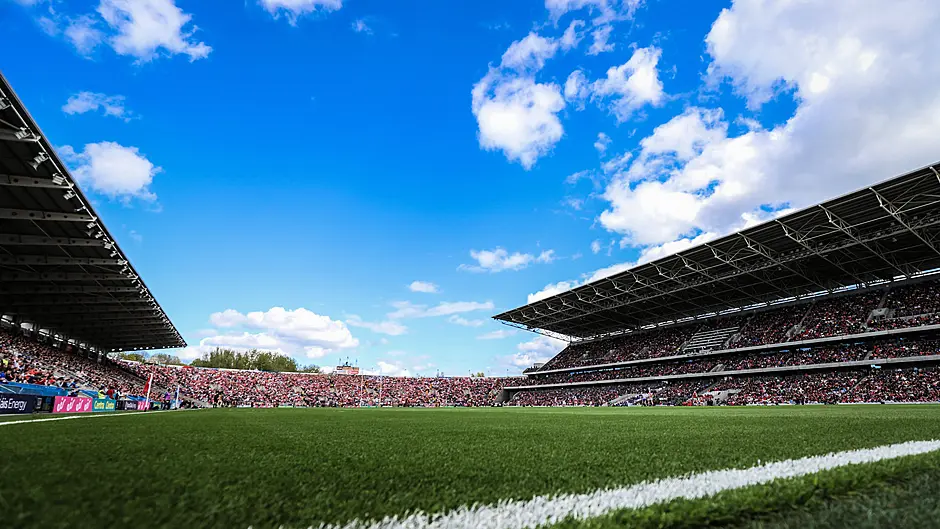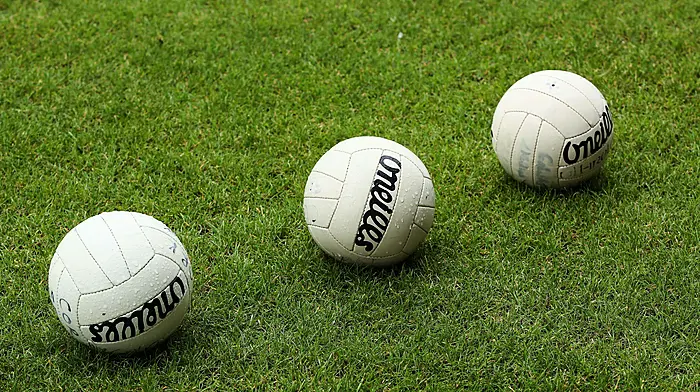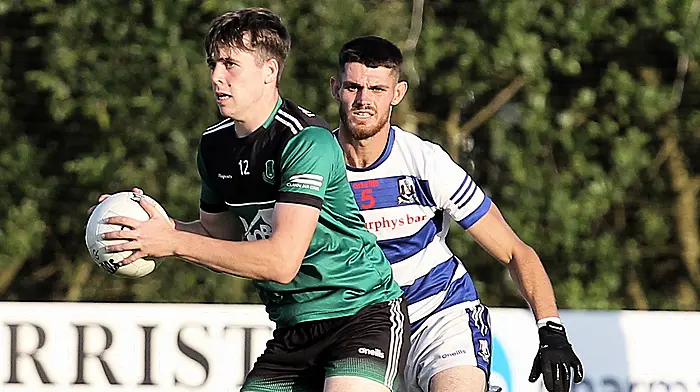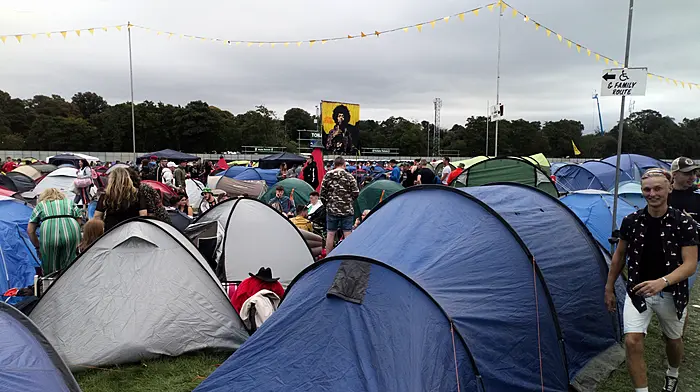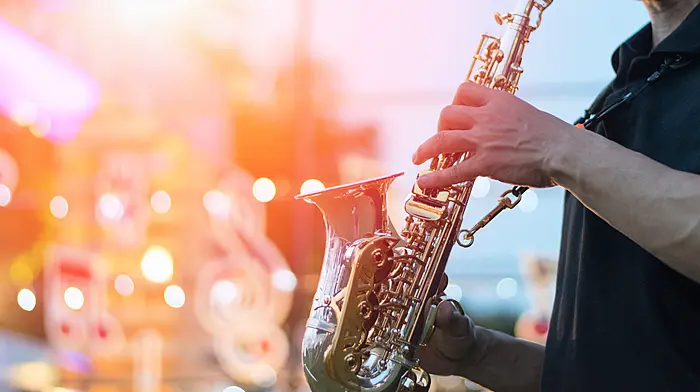TOM LYONS feels raising the standard of coaching and better use of GDAs' skills will improve Cork football
THE recent football review report, which resulted from the special meeting held by the county board, certainly makes interesting reading as regards the state of football in Cork.
During the meeting in early July, board delegates aired their views on many aspects of football in Cork. What should be noted is that delegates were not concerned with the state of club football in general and the manner in which the county championships are being run. Most of the problems aired were connected with the Cork inter-county teams, ranging from the development squads right up to the senior team.
The question must therefore be asked: which is more important, club teams or county teams?
Is the county board primarily responsible for the clubs in the county or for the inter-county teams it supervises?
There can be no arguing that it is the inter-county teams that now take priority and it is the success or failure of those teams that captures the imagination of the vast majority of GAA fans. Cork supporters would have filled Croke Park for the All-Ireland hurling final if they could have gotten their hands on all the tickets but what are the attendances at the county football finals? Maximum 8,000 maybe.
To understand why county boards have become primarily the controlling bodies of inter-county teams, we have to go well back in GAA history.
The GAA was founded in November 1884 but it was not until 1887 that the first All-Ireland championship was run. At the beginning a central executive ran the entire association and new clubs had to affiliate with that executive. The first club formed in West Cork, in 1886, the Michael Dohenys in Dunmanway, was the only West Cork club affiliated to the executive.
In December 1886 county boards were set up and from then on, all clubs had to affiliate to the county boards. The Cork County Board was set up on December 19th, 1886, at Maylor Street, Cork, with Alderman Dan Horgan (Lees) as the first president (chairman). Dunmanway GAA was the only West Cork club present at that meeting.
The task of the county board was the promotion of Gaelic games in the county and the setting up of new clubs. The first step the board took was the setting up of a county championship, one grade, senior, only. The setting up of county championships coincided with the running of All-Ireland championships in 1887.
What is important to note is that it was the winning club team in the county championship that would represent the county in the All-Ireland series, and the Munster championship that was set up in 1888. Thus, it was that Dohenys, as county champions in 1897, went on to contest an All-Ireland football final, played in 1899.
At that stage, it had been agreed that the winning club team could borrow the best players from other clubs for the inter-county series. Thus came into being a county team made up of players from different clubs, but still under the care of the county champion club.
The next step in the development of county teams came when it was decided by county boards to take the running of the teams out of the hands of the winning clubs and the first selection committee in Cork to undertake the picking of the football team was set up in 1913. This meant the running of the county team was now completely in the hands of the county board and down the years since then the primary duty of the board shifted from the running of clubs to the running of county teams.
This was never the intention of the founding members of the GAA and was, in fact, the tail wagging the dog. Over the years the tail got bigger and bigger as new inter-county grades were introduced to the detriment of the poor dog, i.e. the clubs.
So, how does this fit in with the present dilemma of Cork football? Simply, trying to cure the ails of our inter-county football teams cannot be achieved in isolation because the team is only the tail of the dog. First, we must look after the dog itself, as was always intended at the very beginning of the association. The club must always be the priority and that is something that is being sacrificed on the altar of inter-county football. Mind the clubs and the rest will surely follow.
How do we mind the club? First off, while the new split season is favoured by most players, especially inter-county players, because it gives certainty in drawing up playing programmes, it must be realised that for most teams the club championship now lasts for only seven weeks out of 52, the last weekend of July to the second weekend of September.
If we want to improve the Cork senior football team, we must first improve the footballers available to that team. That can only be done properly through the clubs but how can we seriously expect to improve players during a seven-week championship window? You might well say that leagues are run to provide players with games from March to June but how seriously do we take those leagues in the GAA?
The inter-county players themselves are never available for those club league games or for training with their own clubs from March to June. Surely some way must be found to keep all the players involved with their clubs for longer than the seven weeks of the county championship.
The next problem that needs solving is how to improve the club players to a level that will make many of them suitable and capable of playing inter-county football. At present, Cork players are cocooned in a bubble from January to July, and that isolation has proved totally insufficient in developing them to the required standard to be able to contest All-Ireland semi-finals and finals. Instead of cocooning the best players, surely the aim should be to release them back to their clubs as much as possible in order to raise the standards at club level.
But the most important way to improve players is through good coaching. At present, the underage squad system is not working in football in Cork and we must ask why not? Maybe a look at the coaching in those squads needs to be seriously undertaken. It was said at the Cork football meeting that the intention is to get as many former inter-county players as possible involved with the squads and that the squads would be used to train those ex-players to be good coaches. In other words, instead of the coaches training the squad players, the squads would be training the coaches on how to be good coaches. Surely, that concept is totally wrong.
Many of those ex-players have no experience of coaching in their own clubs, at any level, when they are recruited to become involved with the squads. Again, the solution here is blindingly obvious. Only the very best coaches, who have proved themselves at club levels, should be involved with the development squads. If former inter-county players want to become involved, they should first have to do so at club level and gain experience there.
Which brings us to the issue of the GDAs, the full-time coaches in Cork. What exactly are they being used for? At present we find them running regional underage teams and holding coaching sessions all over the county with different underage groups, most around the U14 age bracket. This, to me, is a total waste of this resource as that work should be done by the clubs themselves.
The GDAs must be employed in coaching the club coaches, not the kids. Good underage coaches will produce good underage players but too many of our underage coaches in the clubs are not fully trained for the job they are doing. Until such time as we raise, drastically, the level of coaching in our clubs, we will not see an improvement in our inter-county teams. The GDAs are central to improving coaching in the clubs and that should be their main function at all times.
Likewise, in our primary and second level schools. Here, too, we must coach the teachers, a dedicated group under ever-increasing pressure. Then those teachers will produce better, more competitive teams under their care.
Simply put, most of our resources in football must be put into coaching the coaches, even at adult level, if we ever hope to bring our inter-county football teams, from minor to senior, up to a standard that will see them competitive in the concluding stages of All-Ireland championships.

